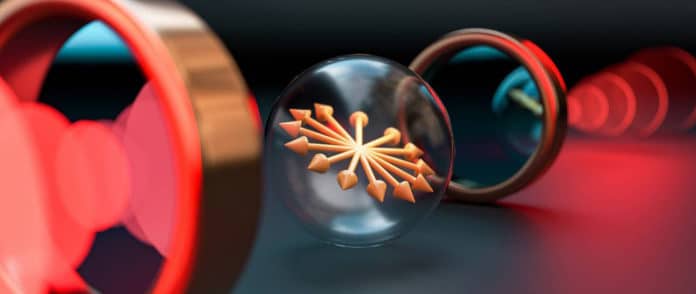Spin is the total angular momentum of small particles that points in a certain direction, that can be manipulated using a magnetic field. This principle is the basic idea behind magnetic resonance imaging as used in hospitals.
An international research group has now found a fantastic impact in a system that is especially appropriate for processing quantum information: the spins of phosphorus atoms in a piece of silicon, coupled to a microwave resonator.
Simulating these spins with microwave pulses can detect a so-called spin-echo signal after a specific time. This signal is known as an injected pulse signal that re-emits as a quantum echo. Fascinatingly, this quantum echo doesn’t occur only once, but a whole series of echoes can be detected. This opens up new possibilities of how information can be processed with quantum systems.
Prof. Stefan Rotter from TU Wien (Vienna) said, “Spin echoes have been known for a long time, this is nothing unusual. First, a magnetic field is used to make sure that the spins of many atoms point in the same magnetic direction. Then the atoms are irradiated with an electromagnetic pulse, and suddenly their spins begin to change direction. However, the atoms are embedded in slightly different environments. Thus they are affected by slightly different forces.”
Dr. Hans Hübl, Deputy Director of the Walther-Meißner-Institute (WMI) at the Bavarian Academy of Sciences and Humanities, said, “As a result, the spin does not change at the same speed for all atoms. Some particles change their spin direction faster than others, and soon you have a wild jumble of spins with completely different orientations.”
Stefan Rotter said, “But it is possible to rewind this apparent chaos – with the help of another electromagnetic pulse. A suitable pulse can restore the previous spin rotation so that all spins fall back in sync once again.”
“You can imagine it’s a bit like running a marathon. At the start signal, all the runners are still together. As some runners are faster than others, the field of runners has pulled further and further apart over time. However, if all runners were now given the signal to return to the start, all runners would return to the start at about the same time, although faster runners have to cover a longer distance back than slower ones.”
Hans Hübl said, “In the case of spins, this means that at a certain point in time all particles have the same spin direction again – and this is called the “spin echo.” Based on our experience in this field, we had already expected to measure a spin-echoin our experiments. The remarkable thing is that we were not only able to measure a single echo but a series of several echoes.”
It was previously unclear how this new effect had come about. Detailed studied made it clear: it was down to the strong link between the two elements involved in the experiment – the spins and the photons in the microwave resonator, an electric circuit in which microwaves can only exist with specific wavelengths.
Hans Hübl said, “This coupling is the essence of our experiment: You can store information in the spins, and with the help of the microwave photons in the resonator, you can modify it or read it out.”
“The strong coupling between the atomic spins and the microwave resonator is also responsible for the multiple echoes: an electromagnetic signal is created when the atom spins have all returned to the same direction at the first echo.”
Stefan Rotter explains, “Thanks to the coupling to the microwave resonator, this signal acts back on the spins, and this leads to another echo, and on and on. The spins themselves cause the electromagnetic pulse, which is responsible for the next echo.”
Co-author Rudolf Gross, director of the Walther-Meißner-Institute and professor for technical physics at the Technical University of Munich, said, “For sure, multiple echoes in spin ensembles coupled strongly to the photons of a resonator are an exciting new tool. It will find not only useful applications in quantum information technology but also in spin-based spectroscopy methods.”
Journal Reference:
- Stefan Weichselbaumer et al. Echo Trains in Pulsed Electron Spin Resonance of a Strongly Coupled Spin Ensemble. DOI: 10.1103/PhysRevLett.125.137701
